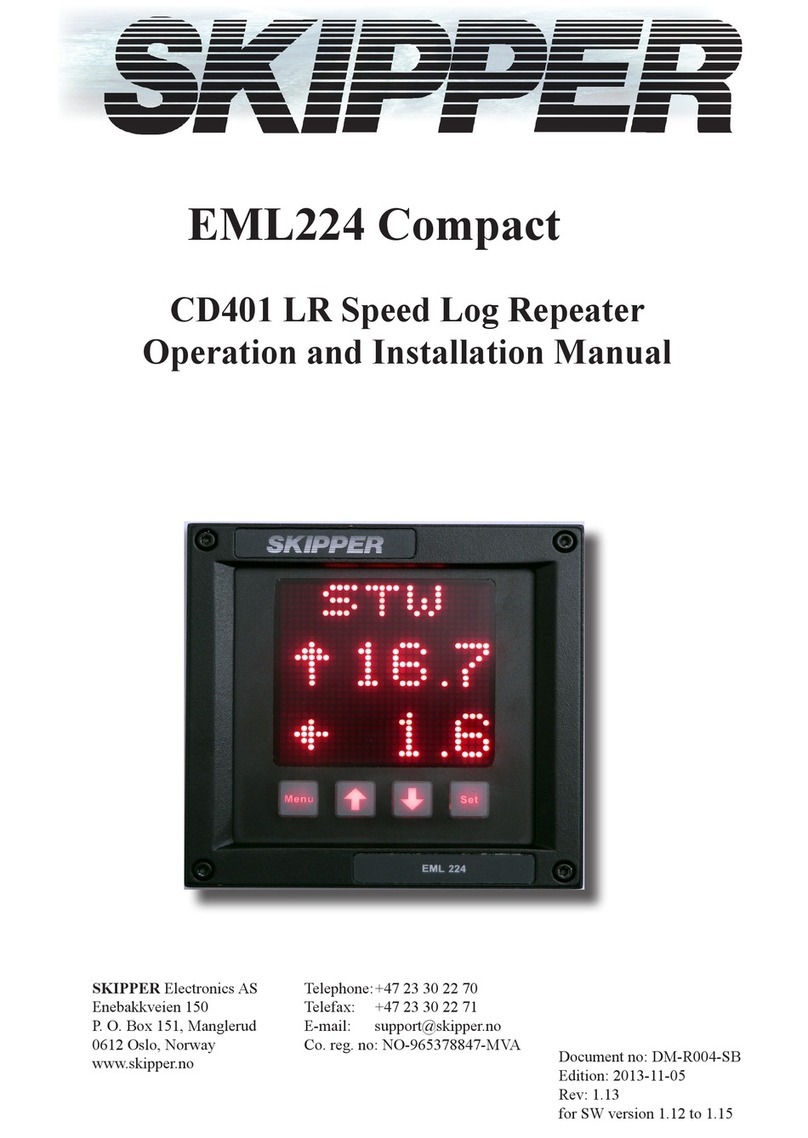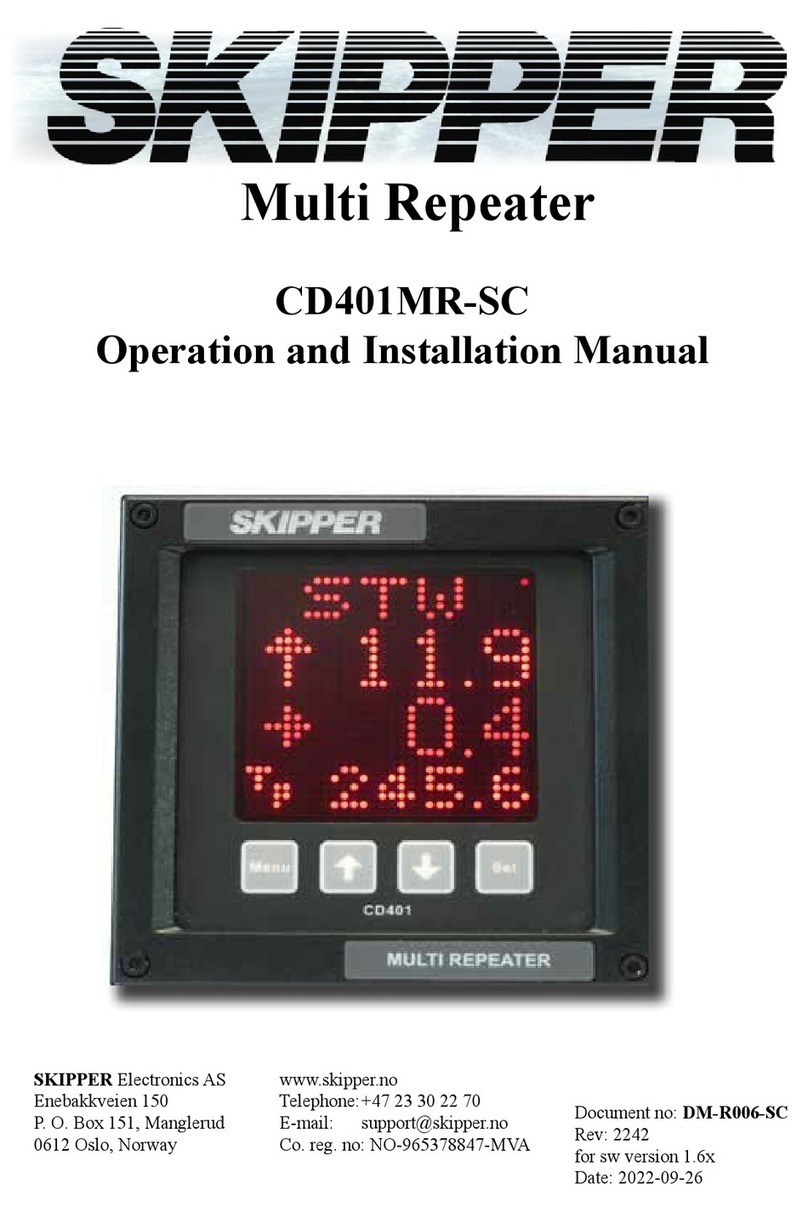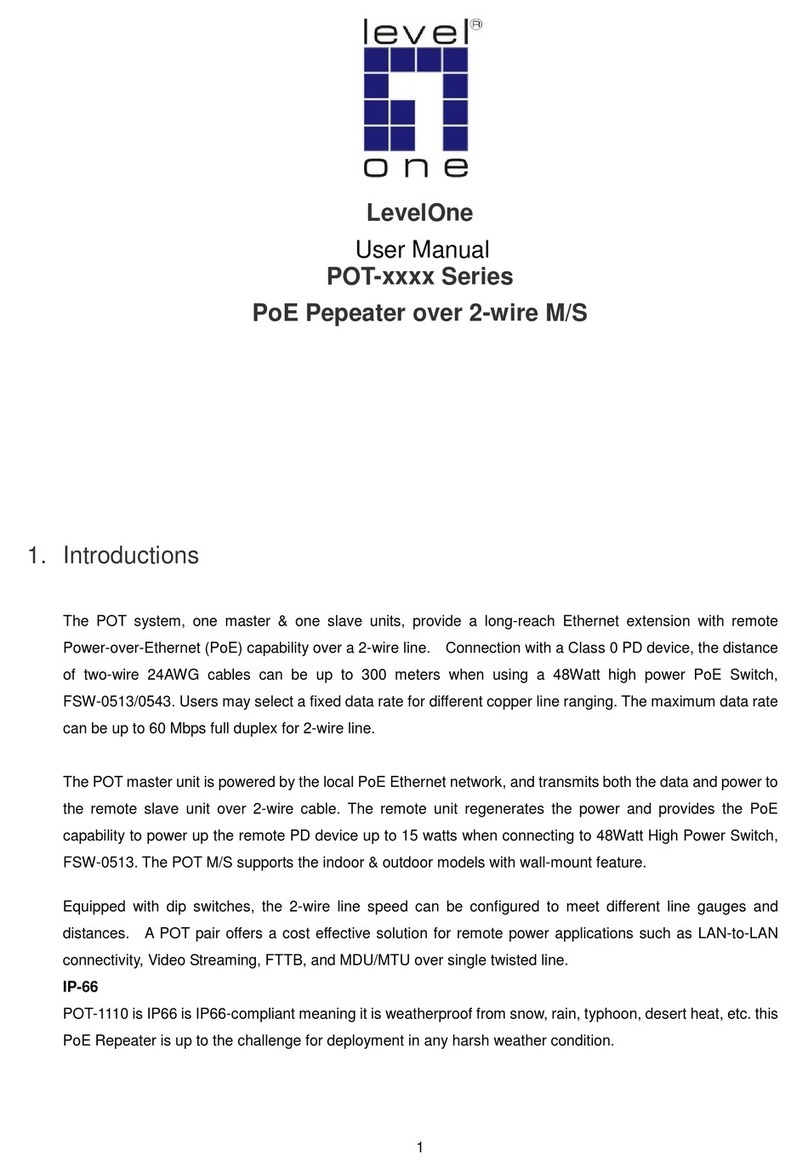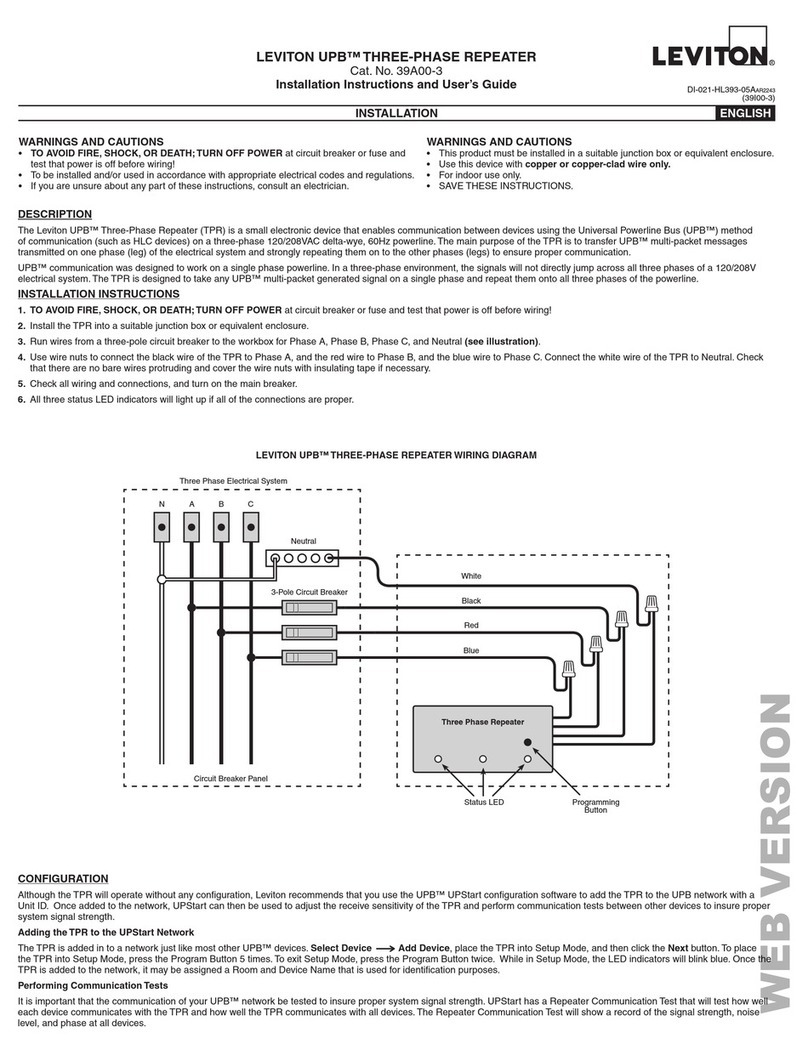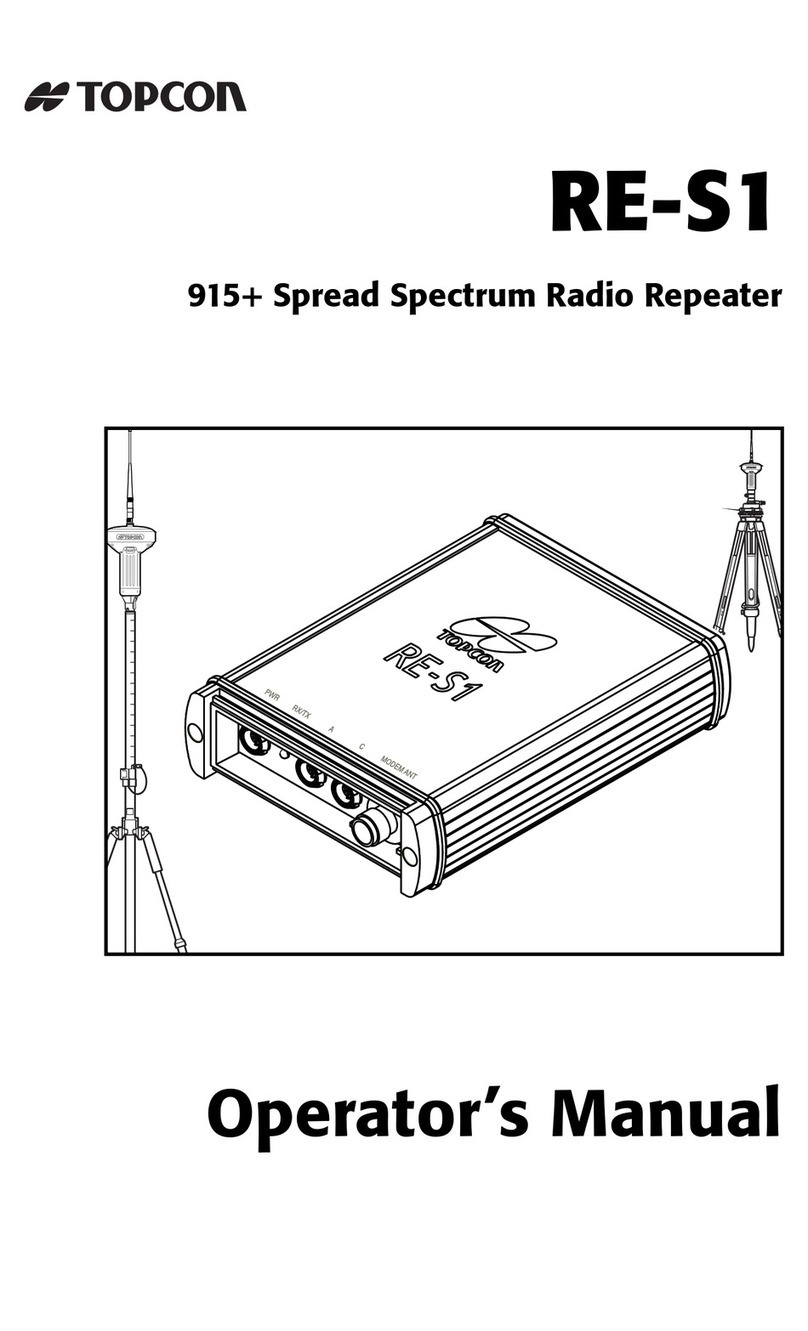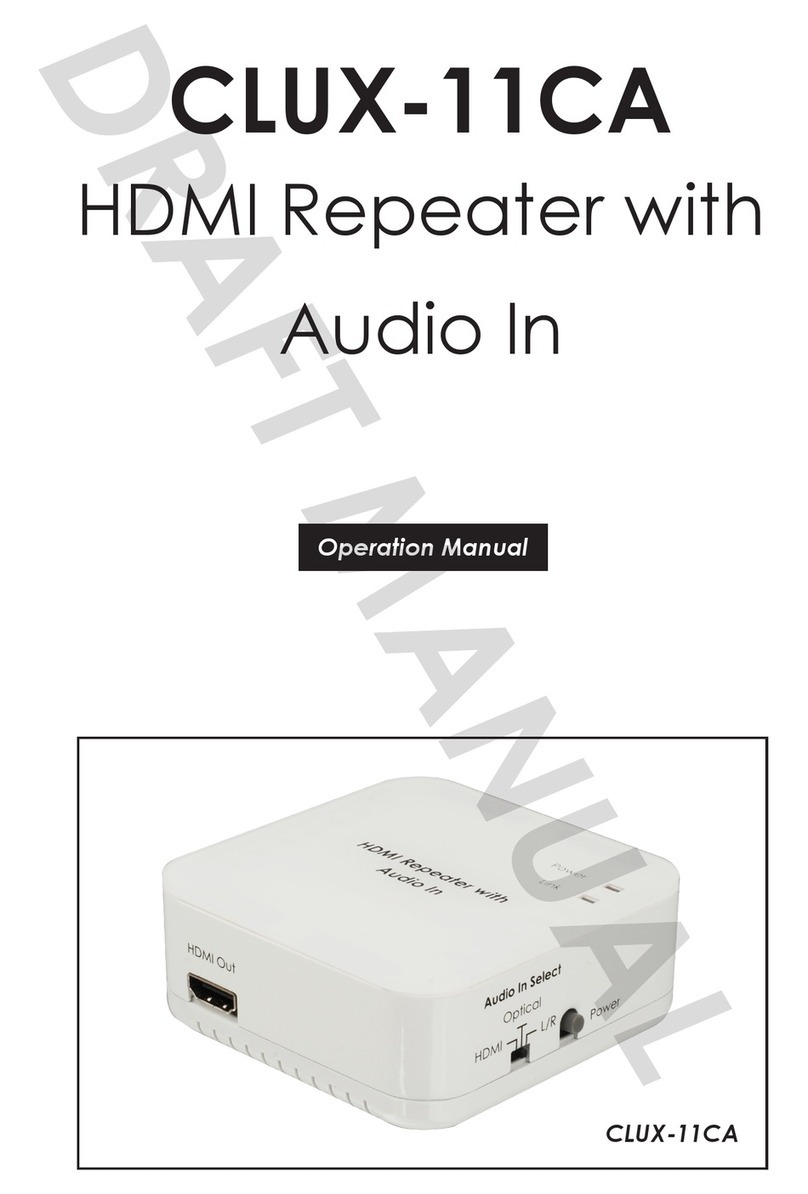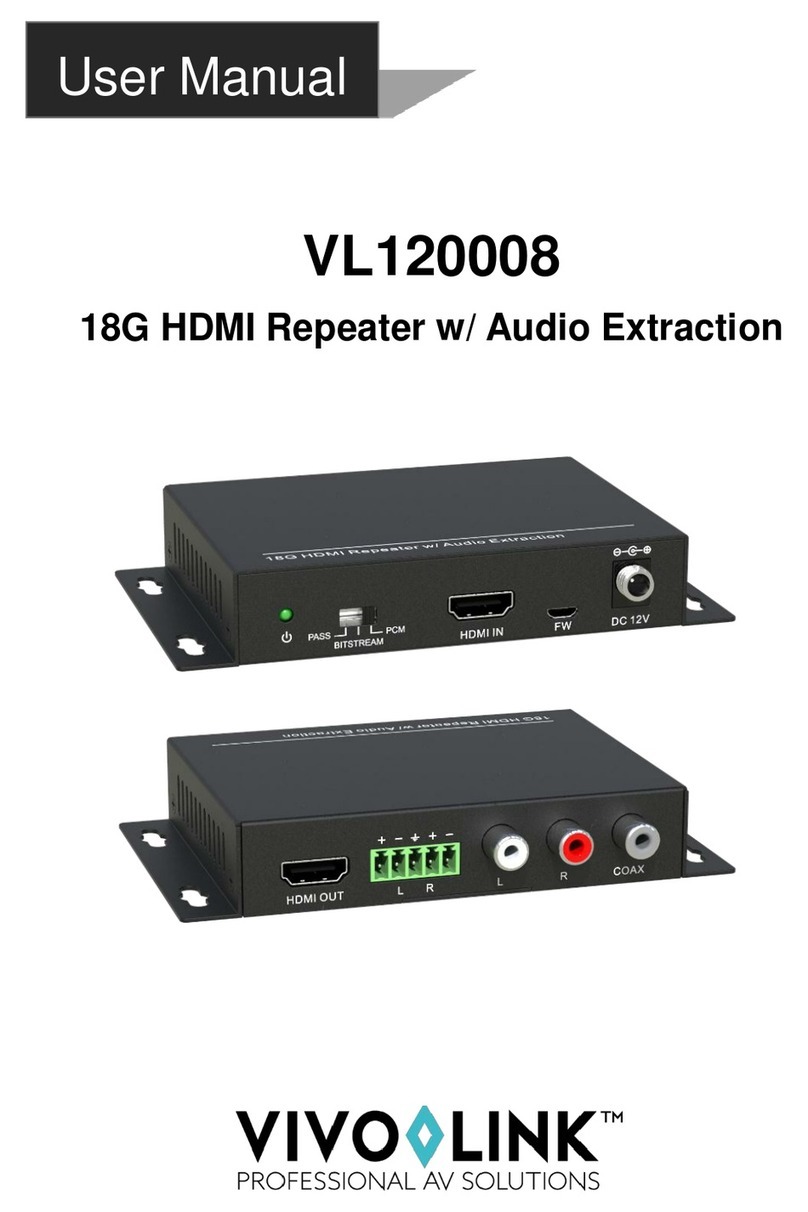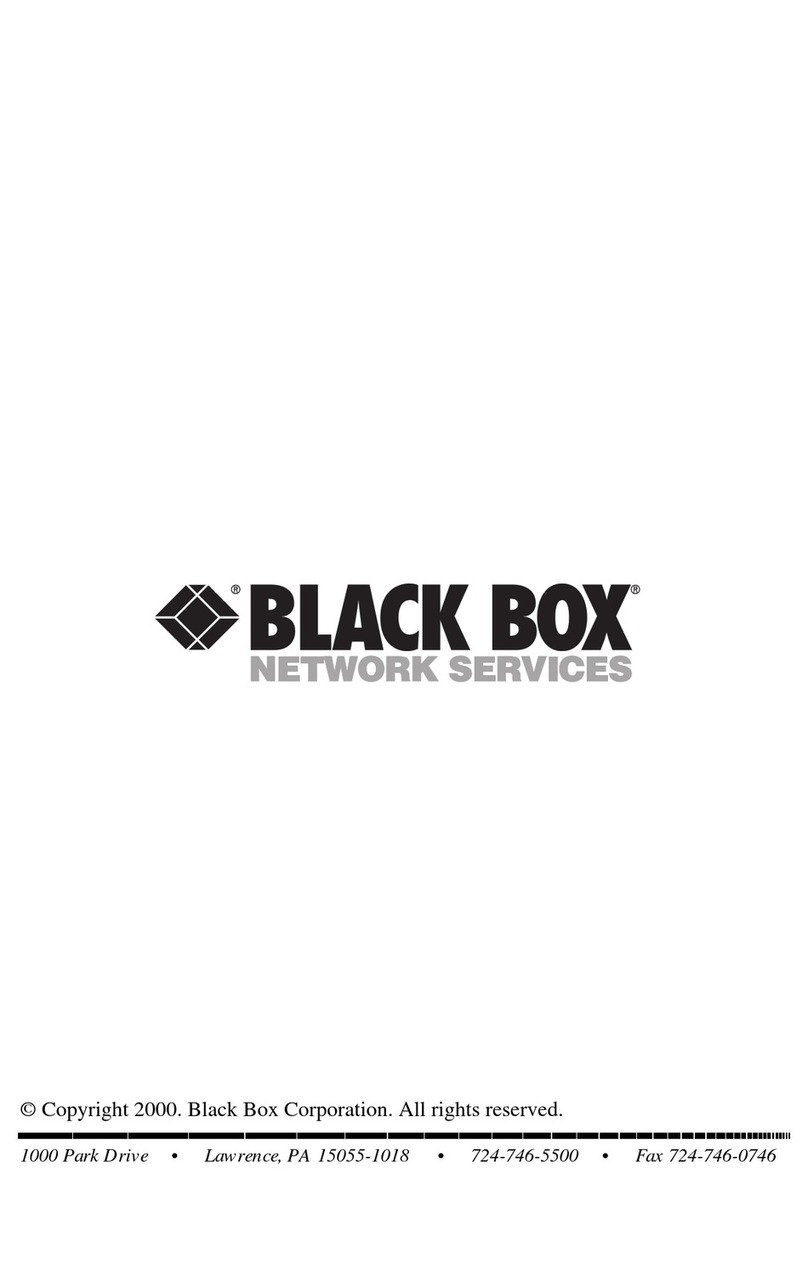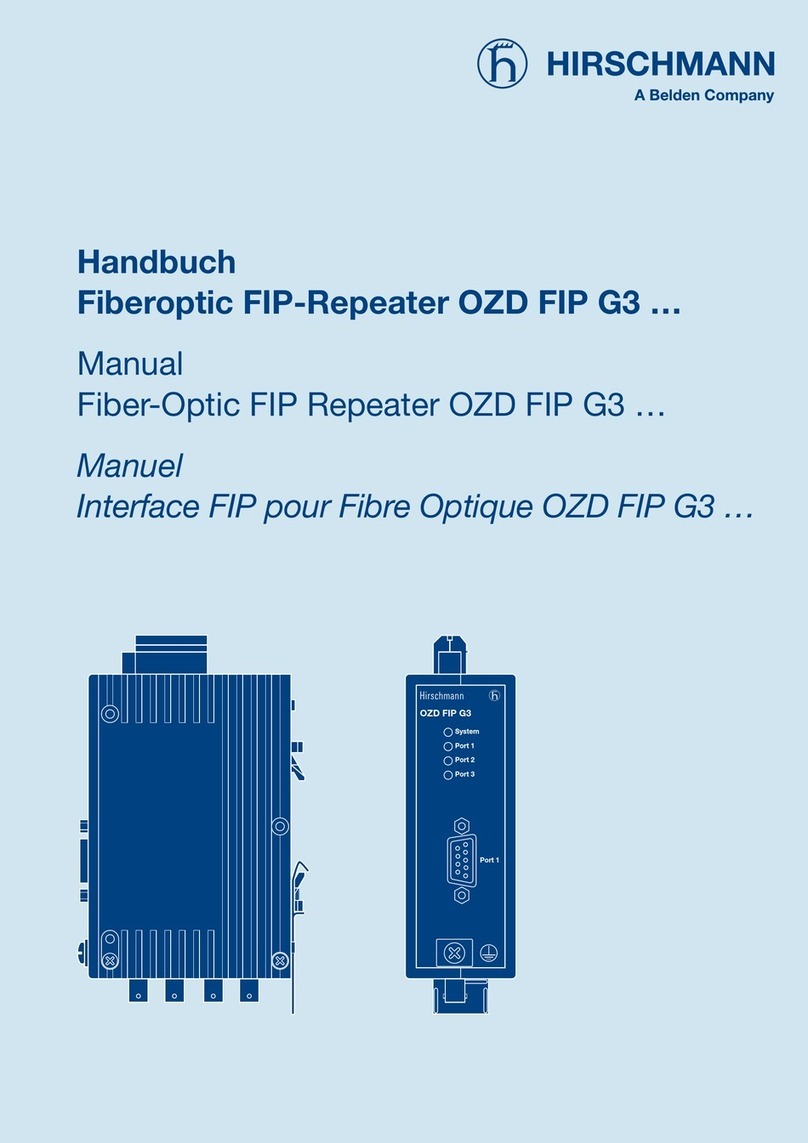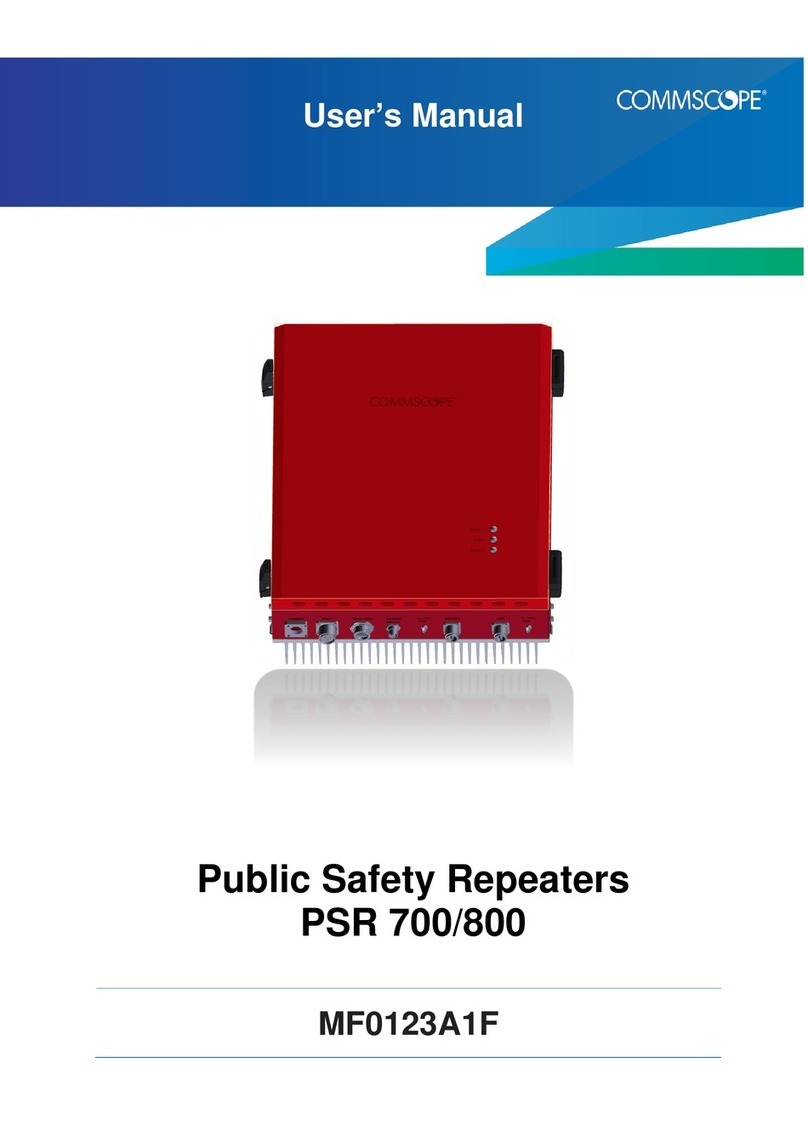Skipper CD401MR-SB Specification sheet

CD401MR-SB
Operation and Installation Manual
Multi Repeater
Document no: DM-R005-SB
Edition: 2011-12-19
Rev: 1.11
SKIPPER Electronics AS Telephone:+47 23 30 22 70
Enebakkveien 150 Telefax: +47 23 30 22 71
P. O. Box 151, Manglerud E-mail: support@skipper.no
0612 Oslo, Norway Co. reg. no: NO-965378847-MVA
www.skipper.no

Operation and Installation CD401MR-SB
Edition: 2011-12-19 Rev: 1.11Page 2 of 52
Weitergabe sowie vervielfältigung dieser unterlage,
verwertung und mitteilung ihres inhaltes nicht
gestattet, soweit nicht ausdrücklich zugestanden.
Zuwiderhandlungen verpichten zu schadenersatz.
Toute communication ou reproduction de ce
document, toute exploitation ou communication de ou
son contenu sont interdites, sauf autorisation expresse.
Tout manquement à cette règle est illicite et expose
son auteur au versement de dommeges et intèrèts.
Copying of this document, and giving it to others
and the use or communication of contents thereof,
are forbidden without express authority. Offenders
are liable to the payment of damages.
Sin nuestra expresa autorización, queda
terminantemente prohibida la reproducción
total o parcial de este documento, asì como su
uso indebido y/o su exhibición o comunicación
a terceros. De los infractores se exigirá el
correspondiente resarcimiento de daños y
perjuicios.
CD401MR-SB
Operation and Installation Manual
December 2011
Edition 2011-12-19 Sw. 1.11

Edition: 2011-12-19 Rev: 1.11
Page 3 of 52
Operation and Installation CD401MR-SB
TABLE OF CONTENTS
Overview. 5
TermInology. Terms used in this manual 6
Units 6
Abbreviations 6
Introduction. The Multi Repeater 7
Chapter 1. Physical installation 8
The Dimming Inputs 9
Chapter 2. Setting up and using the Compact Display 10
Principles 10
Runtime screens 10
Menu screens 10
Shifting screens 10
Activating the runtime screens 11
Menu Diagram 12
Setup of inputs 14
Changing of the baud rate 14
Demo mode 14
Master Reset (Factory Default Settings) 14
Chapter 3. Conguring the screens 15
Runtime screens 15
Accepted NMEA sentences 15
Conguration and operational screen 16
Conguring of screens 16
Depth 17
Speed 18
Distance 19
Heading 20
Rotation 21
Pitch and Roll 22
Wind 23
Temperature 25
Drive 26
Clock/UTC 27
Display Dimming Control 27
Auxillary 28

Operation and Installation CD401MR-SB
Edition: 2011-12-19 Rev: 1.11Page 4 of 52
Error Handling 29
Chapter 4. Maintenance 30
Routine maintenance 30
Checking your version 30
Firmware upgrade 30
Mounting the Multi Repeater facing aft. 30
Appendix 1. 31
Specications and mechanical drawing 31
System specication 31
Display 31
inputs/outputs 31
Mechanical dimentions 32
Appendix 2. 33
Accepted NMEA 0183 sentences Summary 33
Detailed description 35
Appendix 3. 43
Other options with the Multi Repeater 43
Compact options 43
Changing the system/adding options 44
Appendix 4. 45
Current 45
Appendix 5. 49
Sending the system for repair 49
Notes: 50

Edition: 2011-12-19 Rev: 1.11
Page 5 of 52
Operation and Installation CD401MR-SB
OVERVIEW.
_____________________________________________________________________
Terminology
Terms, units and abbreviations used in this manual.
Introduction
This part introduces you to the elements of the Multi Repeater (MR) system.
Chapter 1 – Physical installation
Correct installation of the system will ensure problem free service for many years.
This section explains the main steps to get your system working.
Chapter 2 – Setting up and using the Compact Display
The Compact display is a exible intuitive display allowing data to be displayed in a
user friendly way. It is also a primary system and can be integrated into the navigation
system as regulation stipulate. This chapter explains how to set up the unit.
Chapter 3 – Operation
Once the system is installed and operational, the user can change the screen to show
the data of interest at any time. This section explains the operation of the system.
Chapter 4 – Maintenance
It is a good idea to verify your systems performance from time to time. This chapter
describes how to check interfaces and other issues. In the event of mailfunction, this
is a good place to start for trouble shooting.
Appendix 1 – Specications and drawings
Here you will nd more details of how the system works and which factors are
important to know when using it.
Appendix 2 – Accepted NMEA sentences
This section describes the inputs accepted by the compact display in this conguration
Appendix 3 - Sending the system for repair
In the unfortunate case of a failure that requires a factory repair, the described return
sequence should be followed.
Appendix 4 - Other options with the Multi Repeater
The Compact can be used in a number of different system both as a repeater and a
speed log. This section explains what is available and how to activate the options.

Operation and Installation CD401MR-SB
Edition: 2011-12-19 Rev: 1.11Page 6 of 52
TERMINOLOGY. Terms used in this manual
_____________________________________________________________________
Units
Unless otherwise stated, all values shown on the display are as follows:
Depth Meters
Speed Nautical Miles per hour (knots)
Distance Nautical Miles (nm)
Heading Degrees (0 – 359.9o)
Rotation Degrees per minute (o/min)
Pitch and Roll Degrees (0 – 359.9o)
Wind Nautical Miles per hour (knots)
Meter per seconds (m/s)
Beaufort (Bft)
Temperature Degrees Celcius (oC)
Speed Revolutions Revolutions per minute (rev/min)
Rudder Angle Degrees (0 – 359.9o)
Propeller Pitch Percentage of maximum (0 -100 %)
Clock /UTC hh:mm (00:00 – 23:59)
AbbreviAtions
In addition the following symbols are used on the Runtime screens:
TPDaily trip (in nm)
TLTotal measured distance travelled (in nm)
oDegrees
% Percentage
←↑→↓ Direction

Edition: 2011-12-19 Rev: 1.11
Page 7 of 52
Operation and Installation CD401MR-SB
INTRODUCTION. The Multi Repeater
_____________________________________________________________________
The SKIPPER Multi Repeater allow important values from a variety of systems to be
displayed anywhere on the vessel. The Compact is unique in its simple and exible
way to display vital data in almost all conditions, from no light to bright sunlight.
In addition, it is classed to IP 56 allowing it to be mounted outside and used in any
conditions. The unit is a standard 144 mm format allowing it to be mounted in tight
spaces or overhead.
MENU Up (↑) Down (↓) SET

Operation and Installation CD401MR-SB
Edition: 2011-12-19 Rev: 1.11Page 8 of 52
CHAPTER 1. Physical installation
____________________________________________________________________
The Multi Repeater CD401MR is a stand alone unit and does not require additional
circuitry. It should be supplied by a 24 V (19 V-36 V) 25 W DC supply and the cabling
of the system is as per diagram below. The unit is supplied with 2 m of cable (12 core).
This can be extended without problem. Only the wires in use need extending.
Note: Mounting drawing is available in Appendix 1.
Colour
Codes
Pin no. Signals
Grey 12 NMEA2 OUT B
Turquoise 11 NMEA2 OUT A
Pink 10 NMEA1 OUT B
Orange 9 NMEA1 OUT A
Violet 8 DIM DWN B
Brown 7 DIM DWN A
Black 6 DIM UP B
White 5 DIM UP A
Yellow 4 NMEA IN B
Green 3 NMEA IN A
Blue 2 0 V
Red 1 +24 V
2 m

Edition: 2011-12-19 Rev: 1.11
Page 9 of 52
Operation and Installation CD401MR-SB
the Dimming inpUts
Pulses of at least 60 ms on the dimming up and dimming down cables will cause the
dimming to change by one level. The inputs are optocoupled and therefore require an
external voltage to operate, (5 Volt -24 Volt (Typically 5/12/24 Volt)).
A
A
B
B
C
C
D
D
E
E
F
F
G
G
H
H
1 1
2 2
3 3
4 4
5 5
6 6
SUGGESTED INTERFACE METHODS FOR DIMMING CONTROL
All Diming Inputs DIMnnn
Input Voltage VCC 5 - 24 V
CD401 LR/MR INTERNAL CIRCUITS, SIMPLIFIED
A l t e r n a t i v e s
Rec om me nded
2008.11.13 ØK 2010.05.14 ØK
Misc_IO_Examples
NA
CD_4015/5 A
B
E
C
BC847A
T400
0805
21
100R
R400
A
CA
a
BAV99
D400
2
3
8
7
5
HCPL0201
PH400
1206
1K0
R401
DIMnnnB
DIMnnnA
B
E
C
G
D
S
1
2
4
3
VCC VCC VCC VCC
0805
X7R
1
2
100n
21
0805
C0G
2
1
100p
21
BLM21A10
0805
C0G
2
1
100p
ENA
ENA
INA
INB
OUTA+
Quad 422
D r i v e r _ a
OUTA-
OUTB+
OUTB-
VCC
VSS
4
12
1
7
2
3
6
5
16
8
DS26C31TM
+5V
B
E
CBC847A
A
CA
BAV99
2
3
8
7
5
HCPL0201
0805 12
100R
0805 12
300R
NMxOUTB
NMxOUTA
NM2OUTB
NM2OUTA
NM1OUTB
NM1OUTA
DIMDWNB
DIMDWNA
DIMUPB
DIMUPA
NM1OUTB (Pink)
NM1OUTA (Orange)
NMEAINB (Yellow)
NMEAINA (Green)
NM2OUTB (Grey)
NM2OUTA (Turqoise)
+24V (Red)
-24V (Blue)
DIMUPB (Black)
DIMDWNA (Brown)
DIMUPA (White)
DIMDWNB (Violet)
12
11
10
9
8
7
6
5
4
3
2
1
J101
TJC3_12_90

Operation and Installation CD401MR-SB
Edition: 2011-12-19 Rev: 1.11Page 10 of 52
CHAPTER 2. Setting up and using the
Compact Display
_____________________________________________________________________
principles
The Compact Display is a exible dot matrix LED display designed to display navigation
data. The Multi repeater can be user programmed to show most kinds of numerical data
from NMEA messages. It can also be used as a primary sensor display for speed logs
showing the speed values produced by the sensor. The Compact with its JB60CD box
meets all the requirements of a primary device both functionally and electrically. On
its own it meets the requirements as a repeater. The Compact has three user denable
alphanumeric displays, each allowing up to 4 lines to be displayed. When the device is
used as a primary device, some of these screens will be xed.
rUntime screens
The Compact Display starts up in runtime mode. By pressing the MENU button, the
preset runtime screens can be selected. The unit can be dimmed in any of the runtime
screens using the UP and DOWN buttons.
menU screens
To change the setup of the Multi Repeater, the user must simultaneously press MENU
and SET buttons. This will give access to a menu system
allowing the user to scroll up and down the sub menus and
functions using UP , DOWN and SET buttons to select. To
move back up a menu, the MENU button must be pressed.
The middle underlined line is the selected line. The other
lines are dimmed.
The menu structure is shown in the MENU DIAGRAM.
The menus are product dependant, only the relevant menus
are accessible. Some menus are available in all setups.
Press both MENU and SET buttons to activate the menus. Press and hold MENU to
return to runtime screen
shifting screens
The system can be made to shift, with a ve second period, between the activated
screens. Pressing MENU will pause this function, and holding MENU will reactivate it.

Edition: 2011-12-19 Rev: 1.11
Page 11 of 52
Operation and Installation CD401MR-SB
ActivAting the rUntime screens
The system has three user preset runtime screens (SCR1, SCR2, SCR3). The Screen
Menu allows the user to congure and choose which runtime screens to be included in
normal operation. UP and DOWN buttons will scroll to the available screens. By using
the SET button, the user can control each individual screen to ON, OFF or SHIFTING.
Screens set to ON are available to be displayed by pressing the MENU button. Screens
set to OFF will not be displayed. Screens set to SHIFTING will be shown on the
display periodically. Each shifting runtime screen will
be displayed for 5 seconds.
ON
SHIFTING
OFF
If any screens are congured to SHIFTING, these selected screens will automatically
start displaying periodically. The shifting of these preset runtime screens are stopped
if the MENU button is pressed in runtime mode. By holding down the MENU button
longer, the shifting will be started again.

Operation and Installation CD401MR-SB
Edition: 2011-12-19 Rev: 1.11Page 12 of 52
Screens (SCRN)
Select runtime screens
▲ Next sub menu
▼ Prev sub menu
SET select sub menu
MENU return
Screens (SCRN)
▲Next runtime screen
▼ Prev runtime screen
SET activate/deactivate/
shifting runtime screens
SCR1
SCR2
SCR3
INFO
menU DiAgrAm
Screen Conguration (CONFG)
Change the messages being
displayed on each user screen
▲Next sub menu
▼ Prev sub menu
SET select sub menu
MENU return
Cong (CONFG)
▲Change display message
▼ Change display message
SET move to next position on screen
CFG 1
CFG 2
CFG 3

Edition: 2011-12-19 Rev: 1.11
Page 13 of 52
Operation and Installation CD401MR-SB
System Setup (SETUP)
Setup the system
parameters
▲Next sub menu
▼ Prev sub menu
SET select sub menu
MENU return
Baud Settings (NMEA)
▲Higher value
▼ Lower value
Menus, scrollable menu system
Accessed with SET and MENU pressed simultaneously
▲Next sub menu
▼ Prev sub menu
SET select sub menu
MENU return
Diagnostics Advanced Setup (DIAG)
Diagnose and adjust less used parameters
▲Next sub menu
▼ Prev sub menu
SET select sub menu
MENU return
Code option activation (CODE)
Shows serial no
Code number with active digit underlined
▲Increment underlined digit
▼ Move to next digit
SET activates the displayed code
Upgrade mode (UPGRD)
Allow the system to upgrade from cable
Demo (DEMO)
▲Increment mode
▼ Decrement mode
MENU accept mode
Mode 1 = dynamic
Mode 2 = static
Off
Splash screen (INFO)
▲ Dimming up
▼ Dimming down
Option info
Software version
Self Tests (TEST)
▲ Next test
▼ Previous test
SET starts selected test
NMEA output
Select NMEA outputs
▲Move to next message
▼ Move to previous message
SET turn on/off current message
IIVDR
PSKPVDR

Operation and Installation CD401MR-SB
Edition: 2011-12-19 Rev: 1.11Page 14 of 52
setUp of inpUts
The system will allow many NMEA formats to be displayed. The system will
automatically update recognized formats.
chAnging of the bAUD rAte
The NMEA (IEC61162-1) standard is 4800 baud. Some vessels run with higher baud
rates. 4800, 9600, 19200, 38400, 57600 and 115200 baud rates can be selected in the
baud screen of the setup menu.
Demo moDe
A demo mode is available, and can be activated with MENU button in the diagnostics
menu. Two modes are available.
• Mode 1 is a dynamic demo mode taking the present value as the start point and
slowly varying all the available values.
• Mode 2 is a static mode taking the present values and keeping them active.
• Mode 3 is a xed speed longitudinal 5 kn, transversal 1 kn.
When the demo mode is active, alarms will be disabled, and the screen will indicate the
demo state with a blinking S in the upper right corner. The user can turn off the demo
mode from the demo screen, or by recycling the power. The demo mode will turn off
automatically after 10 hours.
mAster reset (fActory DefAUlt settings)
The factory default settings can be restored by performing the following operations:
1. Select CODE in diagnostic (DIAG) menu.
2. Press the SET button (Note: Do not change code value).
The unit will now restart with factory default settings.

Edition: 2011-12-19 Rev: 1.11
Page 15 of 52
Operation and Installation CD401MR-SB
CHAPTER 3. Conguring the screens
_____________________________________________________________________
rUntime screens
The unit starts up in runtime mode. By pressing the MENU button, the preset runtime
screens (SCR1, SCR2, SCR3) can be selected. The unit can be dimmed in any of
the runtime screens using the UP and DOWN buttons. If Trip/Total are selected as a
displayed parameter, they can be toggled using the SET button. If wind speed is selected
as a displayed parameter, the unit can be toggled between knots, m/s, or Beaufort using
the SET button.
AccepteD nmeA sentences
When using the Compact Display as a Multi Repeater, the display could be user
programmed to show the most commonly used NMEA 0183 (IEC61162) messages for:
Depth Below surface, keel and transducer
Speed Over ground and through water (longitudinal, transverse, aft and
relative)
Distance Total/trip for both ground and water
Heading True, magnetic and relative
Rotation Rate of turn and direction
Pitch and roll In degrees
Wind Speed and direction (true, magnetic and relative)
Temperature Water and air
Drive RPM (Revolutions Per Minute), propeller pitch and rudder position
Clock UTC (Universal Time Coordinated), local time and Expected Time
of Arrival (ETA)
Dimming Display dimming
Auxillary User dened NMEA messages
A summary of supported NMEA sentences is listed in Appendix 2.

Operation and Installation CD401MR-SB
Edition: 2011-12-19 Rev: 1.11Page 16 of 52
configUrAtion AnD operAtionAl screen
The programming of parameters to show on the screen is very exible. It is advise to
add leading text before the parameters and not mixing to many different messages. A
typical conguration is to show two related parameters on the screen simultaneously
with leading text. Arrows are added to some parameters for better readability. Press
MENU and SET button simultaneously to enter the main menu screen, select CONFG
and then select wanted screen (CFG1, CFG2 or CFG3) to start congure wanted screen.
See chapter 2 ”Setting up and using the Compact Display” on how to program the
display to show wanted information on the screen.
configUring of screens
The 3 user programmable screens can be set up using the
Cong (CONFG) menu. This submenu allows the user to
select one of the three screens, and on entering the Cong
screen, the user can change the data type to be displayed in
each of the 4 screen positions. UP and DOWN will change
the data type, SET will move to the next screen position.
Placing TXT in the bottom 4th line or 3rd and 4th line will cause the data to spread out
showing fewer data points. The system will not allow you to mix speed data from
different sources on the same screen. Having 2 TXT lines after each other will also
rearrange the positioning. (See examples on next page).
The non-active parameters will continue showing the dimmed present data, when not
selected. Some combinations of data are not allowed, as they may cause confusion.
These will be automatically corrected. Note that the leading text is identical for some
data, and information about talkers are ignored. Regulations require the user to be able
to identify which data they are looking at. This can be acheived by using the TXT
function or a sticker on the unit.

Edition: 2011-12-19 Rev: 1.11
Page 17 of 52
Operation and Installation CD401MR-SB
Depth
The NMEA sentences DPT, DBS, DBT, DBK and PSKPDPT are all supported for
receiving information about the depth. The use of the DPT sentence is recommended
when available. Depth values in feet and fathoms (from DBK, DBT and DBS) are
converted to meters. The screen will display either DEPTH-S (depth below surface),
DEPTH-T (depth below Transducer) or DEPTH-K (depth below keel) depending of
the received sentences (DBS, DBT or DBK) or the offset value in DPT. The proprietary
sentence PSKPDPT will also indicate the transducer location with an arrow in the text
line.
The depth is always displayed in meters. Depth values below 10 meters are displayed
with 2 decimals, depth values between 10 and 100 meters are displayed with 1 decimal
and depth above 100 meters are displayed without decimals.
Maximum depth value to be displayed is 9999 meters.
Cong.
screen:
Runtime
screen:

Operation and Installation CD401MR-SB
Edition: 2011-12-19 Rev: 1.11Page 18 of 52
Speed
The NMEA sentence VBW is supported for receiving information about the speed
through water and speed over ground (bottom) for longtiudinal, tranverse and transverse
aft. The NMEA sentences VHW and VTG are supported for receiving information about
relative speed.
• An arrow, indicating the direction, is added in front of the value for speed values
from the NMEA sentences VBW.
• The relative speed through water is fetched from the NMEA sentence VHW.
• The relative speed over ground is fetched from the NMEA sentence VTG.
• Speed value in km/h is converted to knots if speed value in knots is not available.
• Relative speed is displayed without arrows.
• All speed values are displayed in knots with one decimal. Maximum speed value to
be displayed is +/- 99.9 knots.
Cong.
screen:
Runtime
screen:
The Multi Repeater will accept the NMEA sentence VMXDR to change the direction
of the speed through water. Receiving the following NMEA sentence will change the
direction of the STW:
$VMXDR,A,180,D,SPDD*hh<CR><LF>
An arrow symbol is added in front of the STW text to indicate that the speed direction
is reversed. Receiving the following NMEA sentence will change the direction of the
STW back to normal:
$VMXDR,A,0,D,SPDD*hh<CR><LF>
The VMXDR sentence must be valid together with the VBW sentence.

Edition: 2011-12-19 Rev: 1.11
Page 19 of 52
Operation and Installation CD401MR-SB
The Compact Multi Repeater Backwards (CD MB) will display the arrow symbol in
both directions if VMXDR with speed direction information is received. Note that
the Compact Multi Repeater Backwards already displays the STW speed in opposite
direction, so receiving information about reverse speed will again turn the speed
direction with 180 degrees.
Screen with arrow symbol in reverse direction:
Distance
The NMEA sentence VLW are supported for receiving information about distances. The
Trip/Total parameters for either water distance or ground distance can be toggled using
the SET button.
The distance values are always displayed in nautical miles and the value will wrap
around after reaching the maximum value of 99999. Total/trip values below 10 are
displayed with two decimals, values between 10 and 1000 with one decimal and values
above 1000 are displayed with no decimals.
Conguration
screen:
Runtime screen:

Operation and Installation CD401MR-SB
Edition: 2011-12-19 Rev: 1.11Page 20 of 52
Heading
The NMEA sentences VHW, VTG, THS, HDT, HDM and HDG are all supported for
receiving information about the heading. It is recommended to use THS instead of HDT
and HDG instead of HDM when available. The deviation and variation parameters in
HDT are ignored.
If the same heading parameter is received from different talkers, the heading parameter
will be prioritized as shown below:
1. Gyro, north seeking (HE).
2. GPS (GP).
3. Compass, magnetic (HC).
4. Others.
An arrow is added on the text line to indicate which direction the bow turns. If no
change in heading from previous value, no arrow is displayed.
The heading value is always displayed with one decimal. Legal range for the heading to
be displayed, are values in the range from 0 to 359.9 o.
Cong.
screen:
Runtime
screen:
Direction of turn is to
port.
Direction of turn is to
starboard.
No change in
heading since last
message.
Table of contents
Other Skipper Repeater manuals
Popular Repeater manuals by other brands
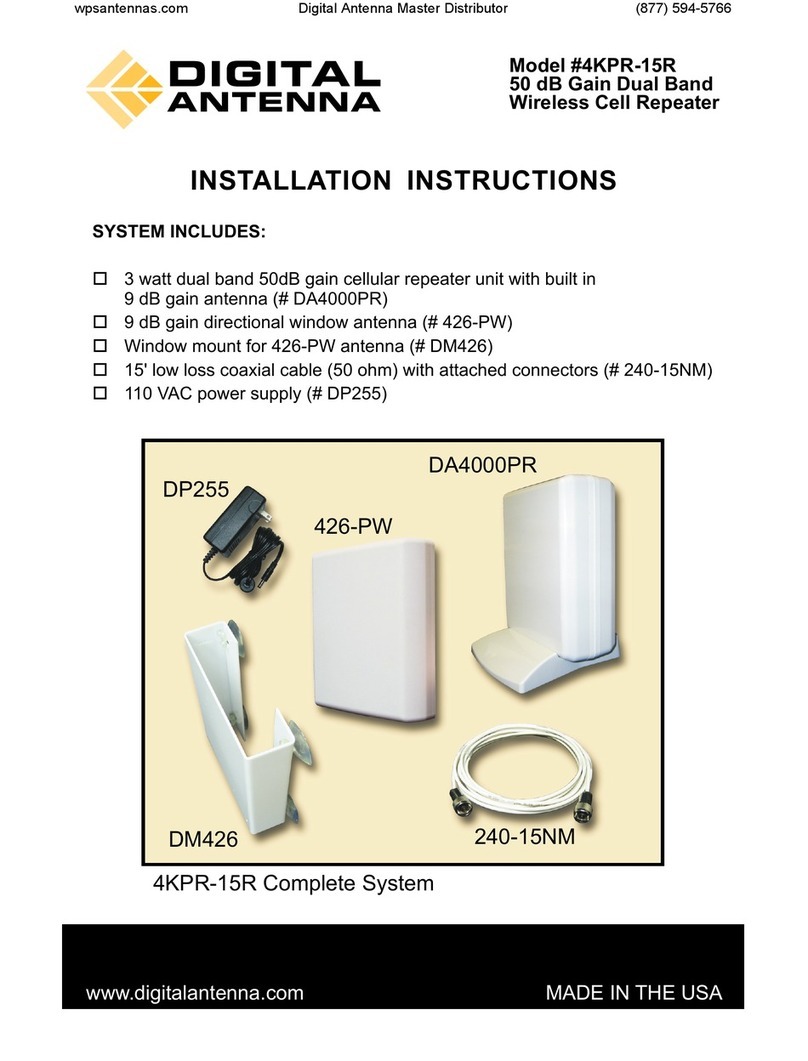
Digital Antenna
Digital Antenna 4KPR-15R installation instructions
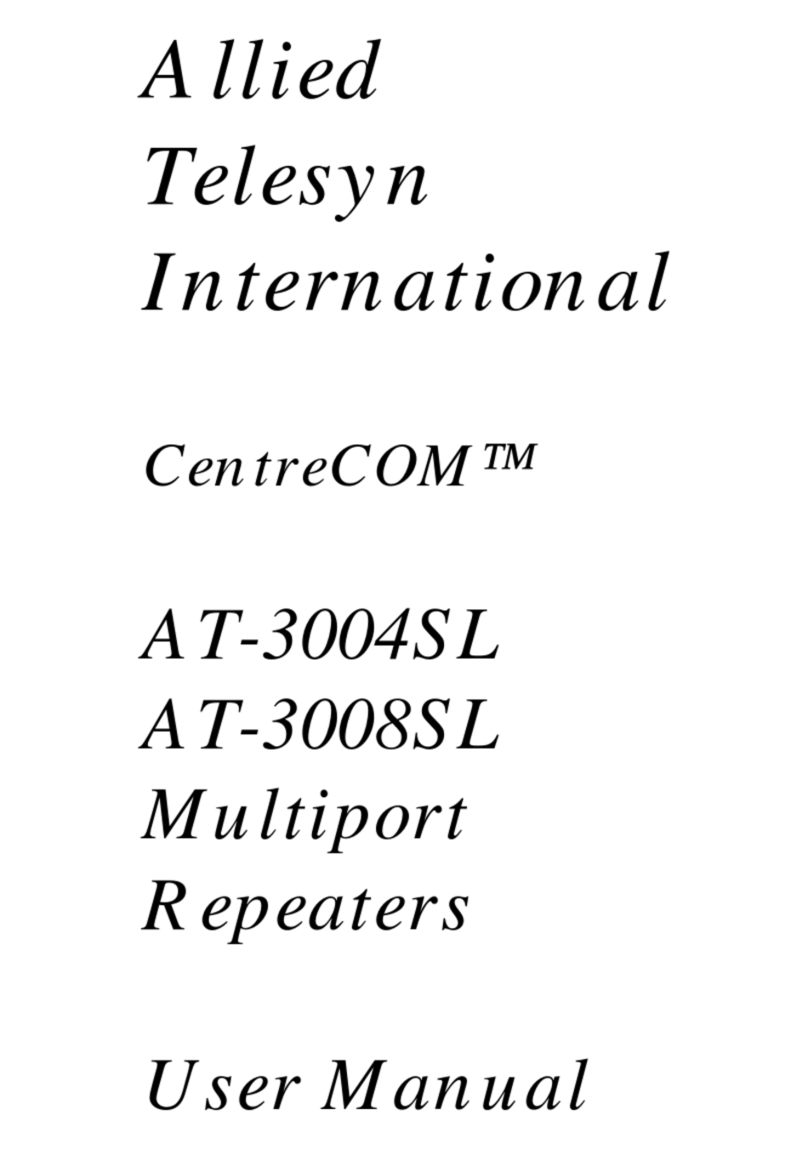
Allied Telesis
Allied Telesis CentreCOM AT-3004SL user manual
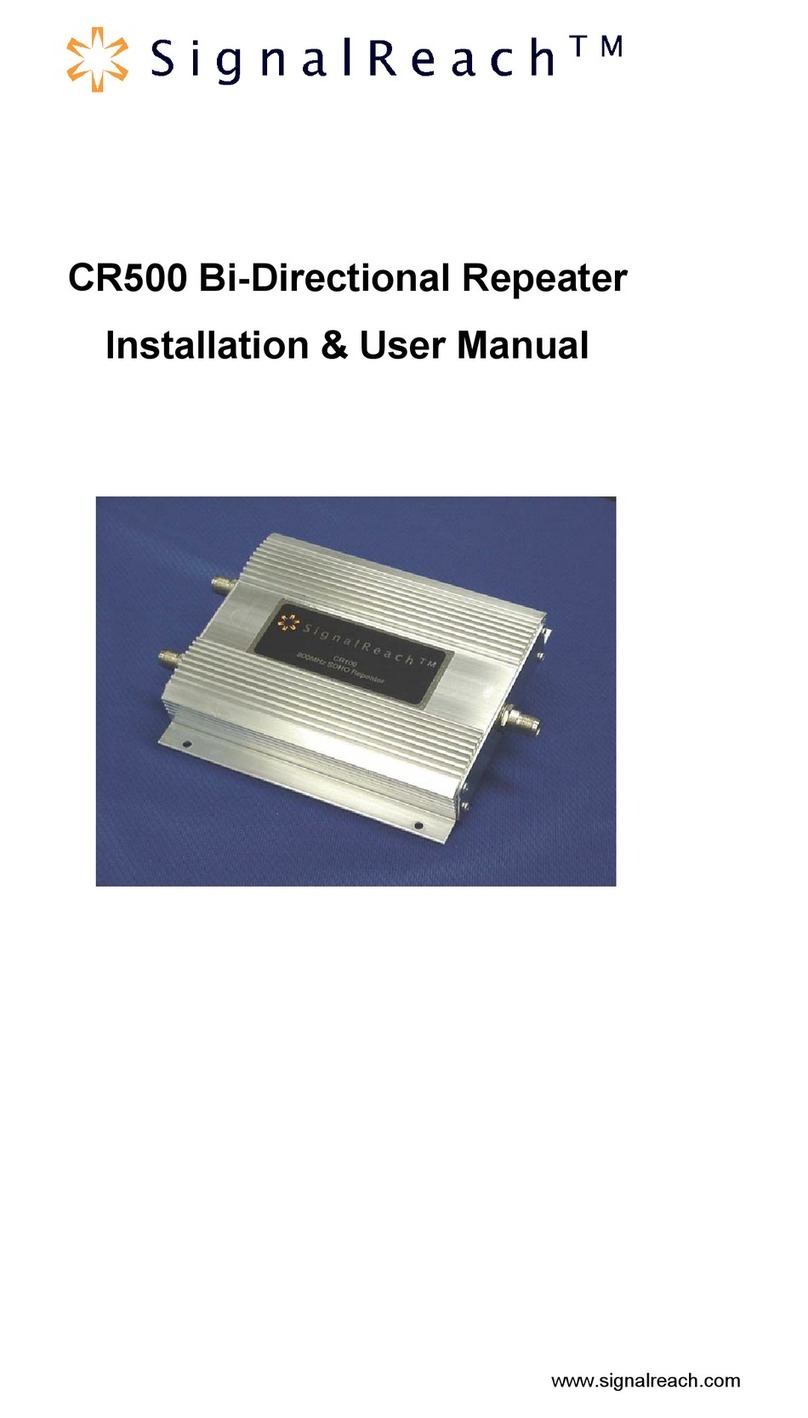
Arrista Technologies
Arrista Technologies SignalReach CR500 Installation & user manual

MORLEY-IAS
MORLEY-IAS ZXr-A Operation & installation manual

HYT
HYT TR-50 Series Service manual
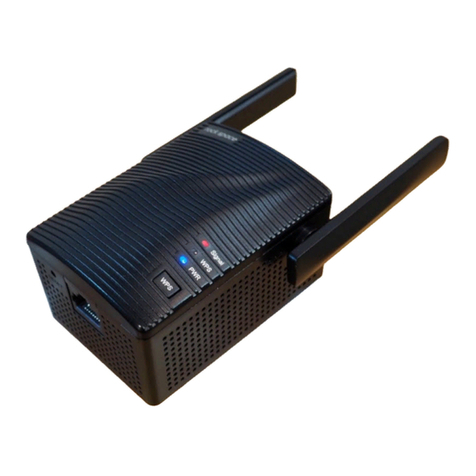
rock space
rock space RSD0608 Quick installation guide
